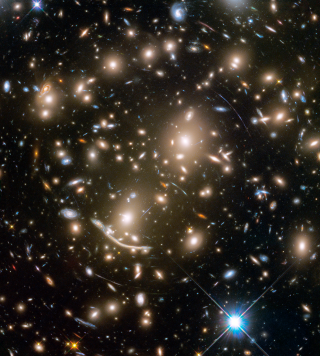Acosta-Pulido, J. A.; Agudo, I.; Barrena, R.; Ramos-Almeida, C.; Manchado, A.; Rodríguez-Gil, P.
Referencia bibliográfica
Astronomy and Astrophysics, Volume 519, id.A5
Fecha de publicación:
9
2010
Revista
Número de citas
15
Número de citas referidas
13
Descripción
Context. NRAO 150 is one of the brightest radio and mm AGN sources in
the northern sky, and is an interesting source to study extreme
relativistic jet phenomena. However, its cosmological distance has not
yet been calibrated, because of its optical faintness due to strong
Galactic extinction. Aims: We measure the redshift of NRAO 150,
to enable us to perform quantitative studies of the source.
Methods: We conducted spectroscopic and photometric observations of the
source in both the near-IR and the optical. Results: All these
observations were successful in detecting the source. The near-IR
spectroscopic observations exhibit strong Hα and Hβ emission
lines from which the cosmological redshift of NRAO 150 (z = 1.517
± 0.002) is determined for the first time. We classify the source
as a flat-spectrum radio-loud quasar, for which we estimate a high
supermassive black-hole mass ~5 × 109 M_&sun;. After
extinction correction, the new near-IR and optical data show a
high-luminosity continuum-emission excess in the optical (peaking in the
rest frame at ~2000 Å) that we attribute to thermal emission from
the accretion disk for which we estimate a high accretion rate of ~30%
the Eddington limit. Conclusions: Comparison of the source
properties and its broad-band spectral-energy distribution with those of
Fermi blazars allows us to predict that NRAO 150 is among the most
powerful of blazars, and hence a high luminosity - although not yet
detected - γ-ray emitter.
Based on observations made with the William Herschel Telescope operated
on the island of La Palma by the Isaac Newton Group in the Spanish
Observatorio del Roque de los Muchachos of the Instituto de
Astrofísica de Canarias.
Proyectos relacionados

Evolución de Galaxias en Cúmulos
Las estructuras en el Universo, a todas las escalas de masa, se han formado de una forma jerárquica y principalmente producidas por fusiones de galaxias. Sin embargo, esta formación jerárquica de las galaxias está modulada por el entorno en el cual se crean y evolucionan. Mientras que las galaxias de campo presentan una evolución pasiva, los
Jairo
Méndez Abreu

Centros de Galaxias a Escalas de Parsecs y Técnicas de Alta Resolución Espacial
Proyecto enfocado al estudio en el IR del núcleo de las galaxias más cercanas con resoluciones espaciales en el rango de 1 a 10 pc. Estas resoluciones espaciales, accesibles con los grandes telescopios de tierra usando técnicas frontera de observación, son por primera vez comparables a las que se obtienen rutinariamente con HST en el óptico y VLBI
Almudena
Prieto Escudero